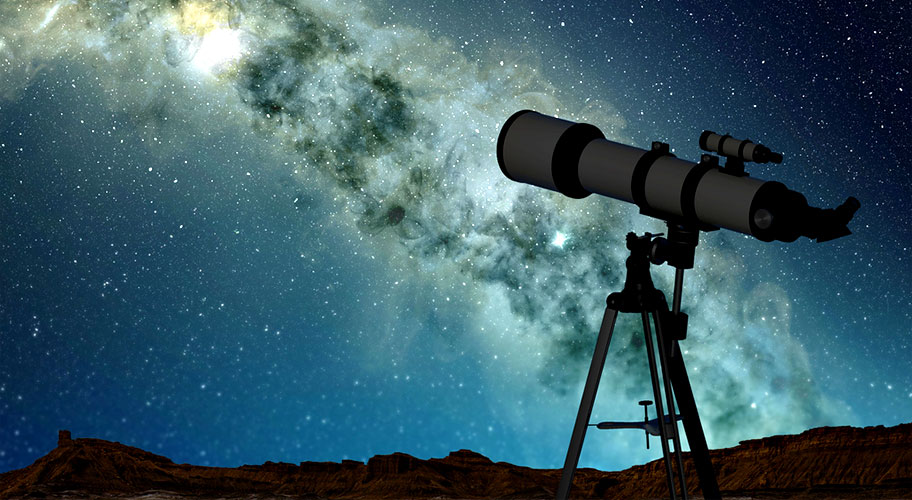
Best Beginner Telescope
Review of 5 Starter Models for 2022
Finding The best beginner telescope is important for building a long-term love with astronomy. Here we will pay attention to the Best Beginner Telescope, because the first model you choose can mean the difference between a lifelong obsession or a fleeting interest in watching stars.
We think that the telescope for a beginner does not necessarily mean cheap or small. It means it’s easy to set up, you can start using it in a minutes and reward you with views you’ll want to see again tomorrow night.
We have selected five great models for new astronomers. If you are a novice stargazer, one of them will meet your needs and budget. Click the “Full Review” links to find out why we recommend each of these models.
Our Best Beginner Telescopes
Celestron NexStar 6SE
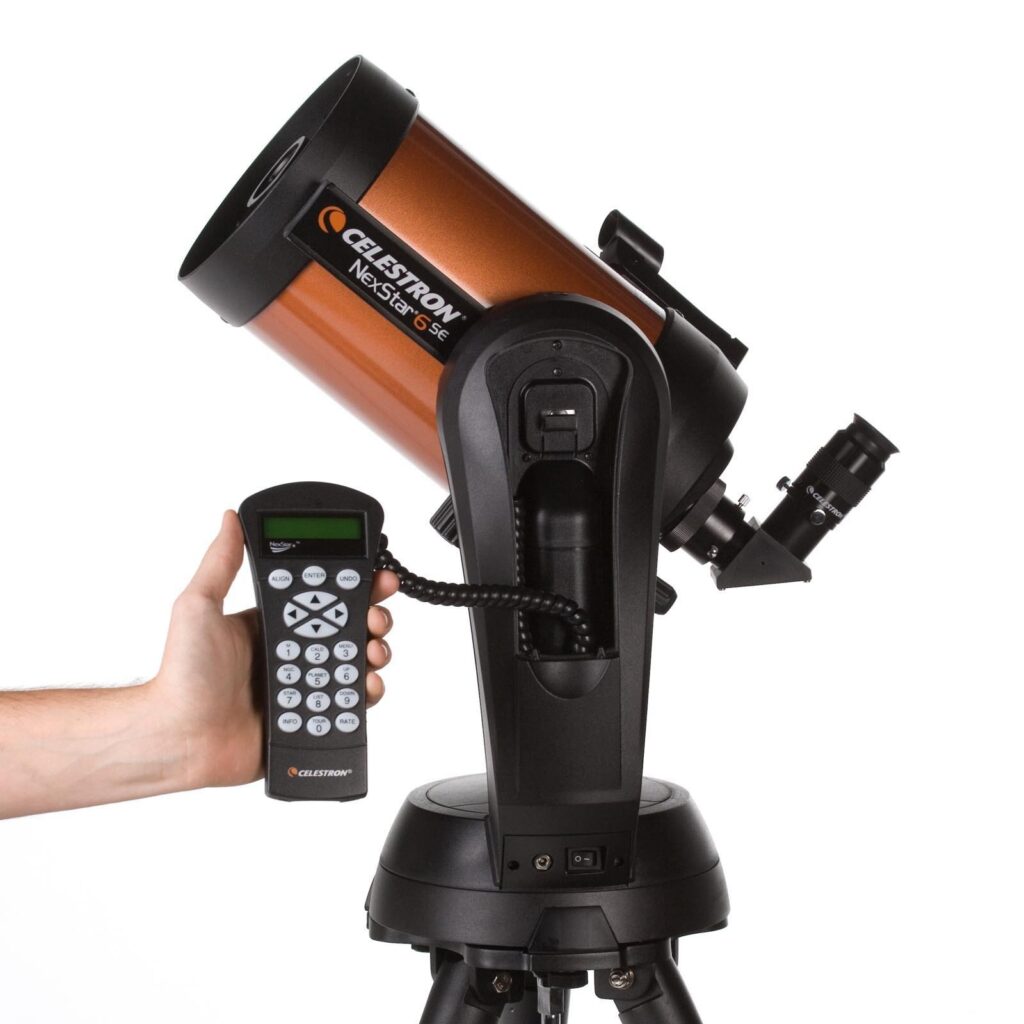
- Easy to setup
- GoTo tracking of objects
- Ideal for astrophotography
- Big database of celestial bodies
Orion SkyQuest XT8
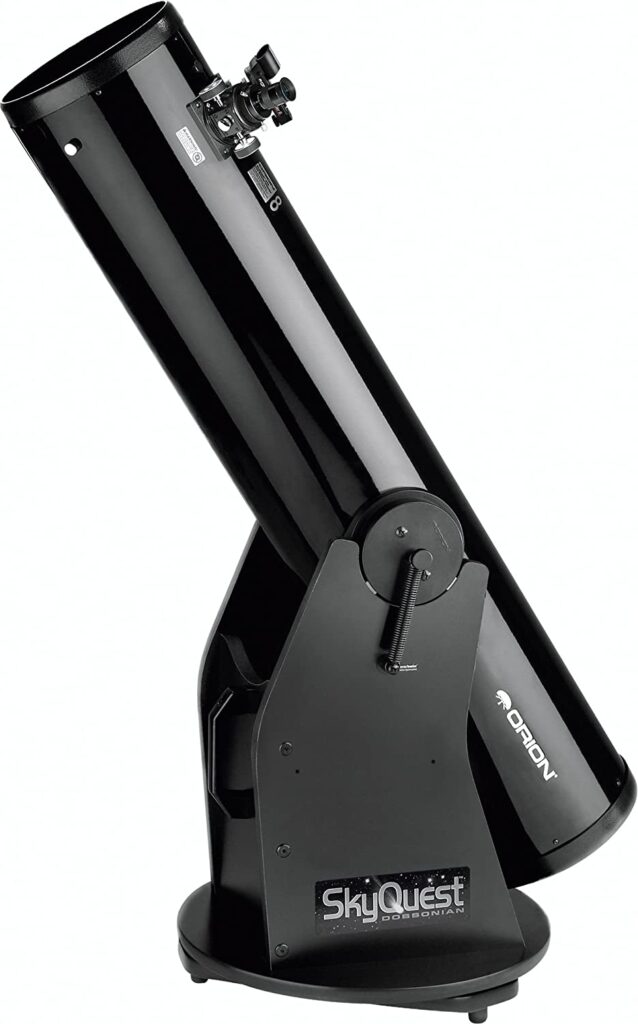
- Large aperture for a low price
- Decent optics and mechanics
- Very good single-speed Crayford focuser
- Fairly portable
- Spring tensioning system for balancing
Orion StarBlast II 4.5
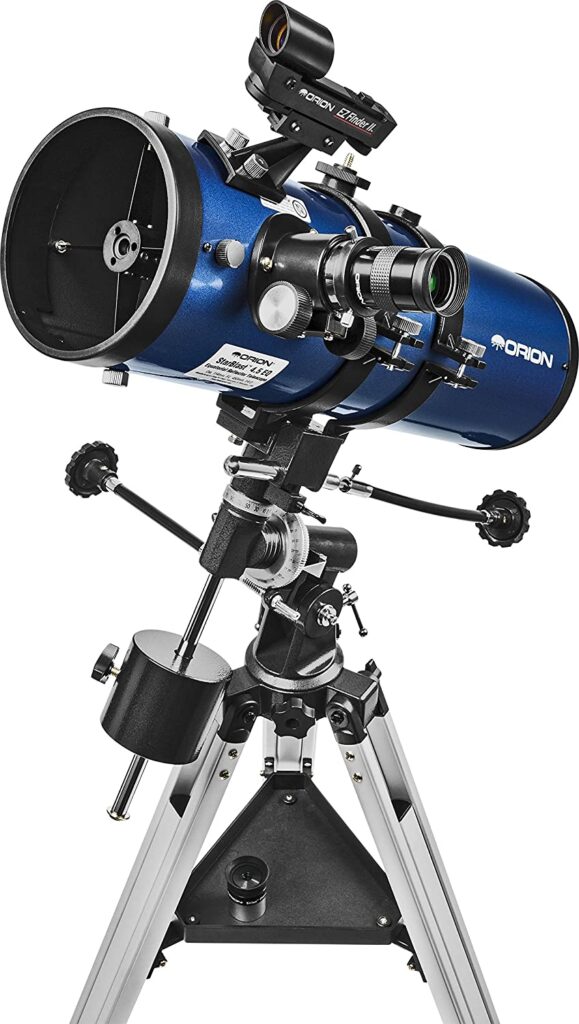
- Great optics
- Great accessories
- Decent aperture
- Wide field of view
Celestron NexStar 130
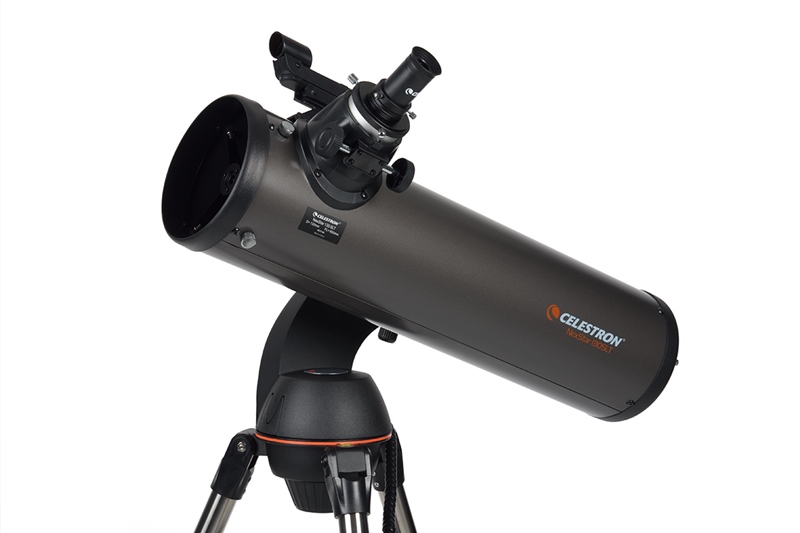
- Wide field of view
- Handheld computer makes it easy to find celestial bodies
- Weighs only 18 pounds for simple transport
- Deep views of the sky
Celestron PowerSeeker 70EQ
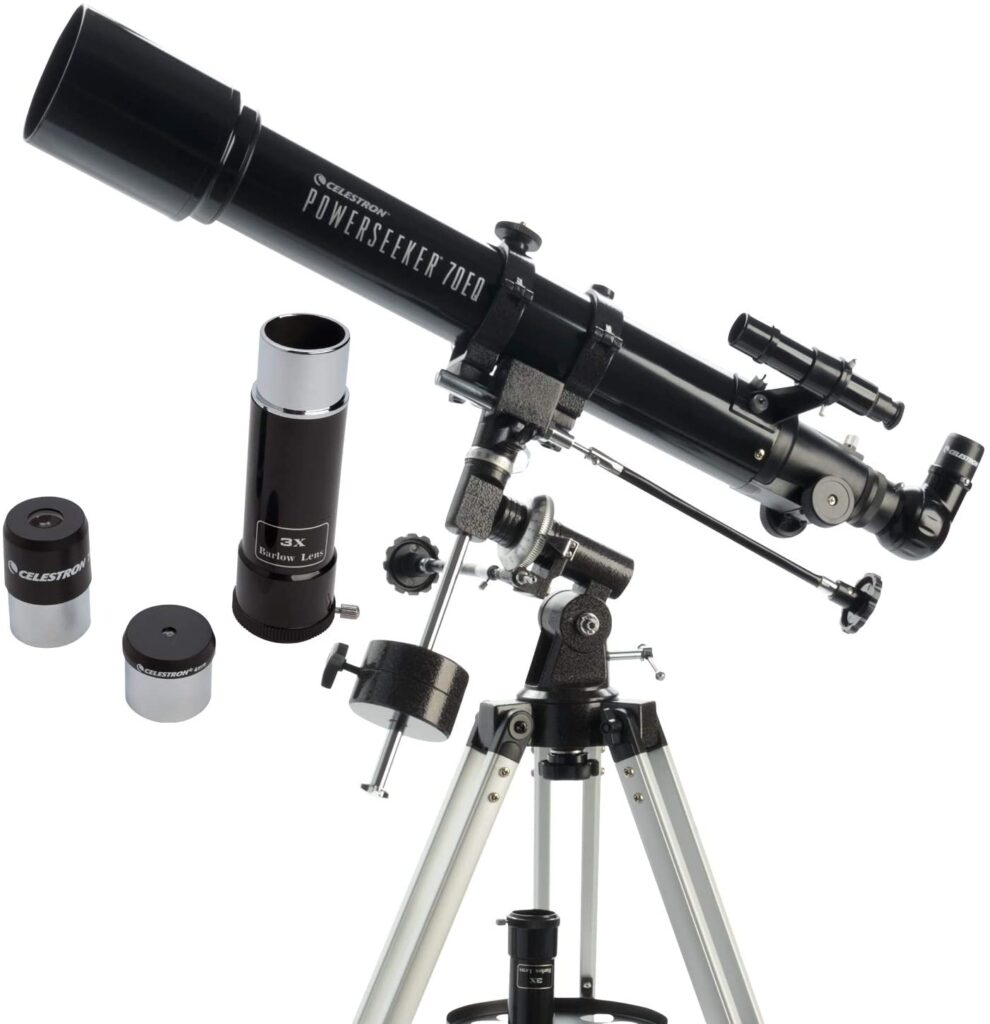
- Portable
- Decent optics
- Sturdy mount
- Easy to assemble
The Beginner’s Guide to Choosing a Telescope
Thinking of getting your very first telescope? It can be overwhelming when you first start searching because there are so many to choose from. It’s so easy to get caught up in the excitement of a new telescope that you might not stop to think about how practical it will be for your lifestyle. But if you arm yourself with a basic understanding of different telescope sizes, types, and mounts, it will be much easier to pick a telescope for beginner in your price range that you will get the most use out of.
To make that choice easier, we advise you pay attention to only a few important factors that suit your needs and budget. They are:
- Aperture size, not Magnification
- Mounts
- Telescope Types
Aperture of a Telescope
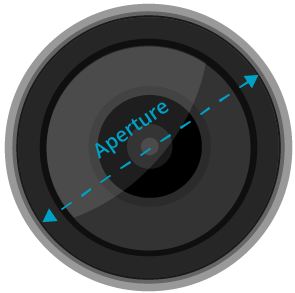
Telescopes rely on the principles of aperture to help people see far-off objects in space. Image quality and magnification all start with the aperture, which is very different from the kind found in cameras. Telescopes have two basic jobs – to collect light, and to magnify images. That second job depends entirely on the first, so in order to build a quality telescope, a manufacturer ensures that the device can gather as much light as possible. A larger aperture means the scope has more light-capturing potential.
With telescopes, the term aperture doesn’t refer to an opening as it does in cameras. Aperture indicates the diameter of the main optical element, which is either a lens or a mirror. As the aperture size increases, more light enters the scope, making your target objects to appear brighter. This results in better visual information for your eyes, and means that you can see fine details and faint objects in space that a telescope with a smaller aperture would miss. Thus, provided it’s made with high-quality construction methods and materials, a large-aperture telescope creates superior magnification and extremely sharp details.
Unfortunately, many beginner astronomers think that getting a telescope with a bigger aperture is the best possible choice. In fact, things are not that simple. If your decision is based only on the size of the aperture you will probably get a huge telescope that collects dust in a forgotten corner of your closet.
Ask yourself, where you are going to use your telescope. If the answer is in the backyard, then a large and powerful telescope will be the best choice for you. If you would like to hang out away from the city lights, and enjoy the dark night sky, then you definitely need something more compact. However, remember that the assembly of the telescope in the dark can be a daunting task, and the one that is too large for outside urban areas or difficult to assemble, most likely will not be used very often.
Magnifying Power of a Telescope
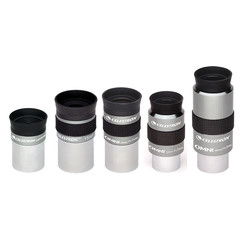
Bearing in mind the aperture, it is good to learn about some other important aspects such as power and design before you decide to make a purchase. The power is actually the magnification that your beginner telescope can offer. So the size of the planets and other objects in space you are going to observe, depend on the power of the eyepiece. It sounds like a critical factor but it is not. You can always change the power by simply using different eyepieces.
Eyepieces are small interchangeable lenses, or in other words the piece you look through your telescope. Most of the best beginner telescope go with a few eyepieces, but don’t worry, any time you want you will be able to buy more additionally. Remember that for clear images, the eyepiece must match the aperture of the telescope. If you use a very powerful eyepiece with a small aperture, the telescope will not show very clear images, while a large aperture telescope can use eyepiece with even 200 times magnification.
A good rule to go by is the maximum magnification should not be more than 2 times the aperture in millimeters (or 50 times per inch aperture). As an example, a 4″ (100mm) telescope shouldn’t be used be used to magnify objects more than 200x (i.e. 4″ x 50, or 100mm x 2). So you have to be careful with a small telescopes that offer magnification much more than 100x. Don’t be grasping for power, even advanced astronomers with large and powerful telescopes rarely use eyepieces with magnification more than 250x.
What are focal length and the f-number?
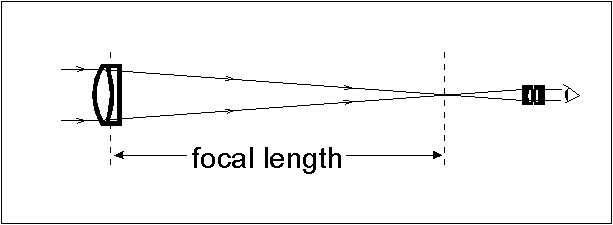
The focal length is the distance between the lens and eyepiece, which for most telescopes will give you an idea of its length. In other words, if a telescope has a focal length of 900 mm, it means that its length will be slightly less than 1 meter. F-number is the focal length divided by aperture and tells you whether the telescope is short and wide or long and thin. So if a telescope has a small f-number, for example F6, it means the telescope is short and wide and provides clear images with low power, while large f-number (F12) is long and thin and will show faded images at high power in the same aperture for both instances.
The Importance of A Stable Mount

Once you know about the aperture and the power in different types of telescopes, let’s look at something that is often overlooked, but it is actually quite important- mounting. Remember that an unstable image is all it takes to kill your enthusiasm! There are two main types of mounting: altazimuth and equatorial.
Altazimuth mounts are a tripod design that only swing up and down (altitude) and left and right (azimuth). You will have to move it in both of those planes to search for and follow the planets and stars as the Earth turns. These mounts are often supplied with cheaper scopes and suffer from vibrations, but you can make alterations to dampen these at home.
An equatorial mount, on the other hand, makes it easy to follow celestial body. Once set up you only need to turn it in the left/right plane to keep any object in view, the mount automatically handles the up/down plane. They also tend to be of more solid and robust build, making viewing less prone to vibration and more pleasurable.
While equatorial mounts are more expensive than their altazimuth counterpart, we highly recommend them if they fit inside your budget.
Types of Telescopes – Refractors vs. Reflectors vs. Catadioptrics
There are three different types of telescopes: refractors, reflectors and catadioptrics. The key difference between a refractor and a reflector is that a reflector uses a mirror as the primary component of its design, while a refractor uses only a lens at the end of a long tube. That means reflectors can be much shorter in length while also allowing for wider apertures, although they can require more setup and maintenance to keep everything in alignment.
Compound (Catadioptric) telescopes, as you might have guessed, are simply a combination of the two, and employ both mirrors and lenses that allow for even smaller and more portable telescopes (albeit at a higher cost). All three types have the same light collection properties despite the differences in size and weight. They all have the same goal: to gather light and carry it into a point of focus where it can be magnified with an eyepiece, but they do it differently. Therefore, any type of telescope has its pros and cons that may match your needs.
Reflecting Telescope or Reflector
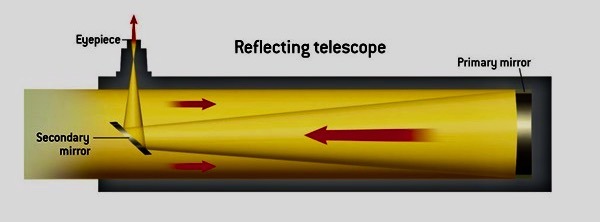
A reflector uses its primary mirror to gather and focus light. The two typical examples are the Newtonian reflector (so called because it was developed by Isaac Newton) and the Dobsonian telescope. They each feature a concave mirror at the base and a smaller diagonal mirror near the top. They provide great image quality and you get plenty more light collected for your cash. The Dobsonian comes mounted on an easy to use base that is a ‘point and shoot’ style.
Advantages
- Easy to assemble and use
- Excellent for observation of galaxies and nebulas because of the large aperture which collects more light
- Very small failures, delivers clear and bright images
- Relatively compact and portable
- Reflecting telescope has the lowest cost per inch for aperture as mirrors cost less than the lens
Disadvantages
- They are not very suitable for terrestrial observations
- There is some light loss due to secondary mirror located inside the tube
- The tube is open and allows entry of dust
- Reflecting telescope may need a little extra maintenance and care
Refracting Telescope or Refractor

This is the most common type of telescope. The light travels in straight thin tube directly from the front lens to the eyepiece at the opposite end of the tube.
Advantages
- Very easy to use due to the simplicity of its design
- Very good for terrestrial observations
- Excellent for lunar and planetary observations, even binary stargazing if there a large aperture
- Sealed tube prevents optics and significantly reduces interference image caused by air currents
- Durable, needs very little or no maintenance
Disadvantages
- Relatively small aperture – 3 to 5 inches
- Less suited for observation of small objects or those in deep space as galaxies and nebulae
- Larger and more bulky than the other 2 types with the same aperture
- The quality refractor telescope has big price for aperture per inch compared to reflector and catadioptric telescopes
Catadioptric ( Compound) Telescope

Catadioptric telescopes use a system of mirrors and lenses to focus the image before it gets on the eyepiece. This is the most popular type of telescope, with the most modern design providing the larger aperture. There are two popular models: Schmidt-Cassegrain and Maskutov Cassegrain
In the Schmidt-Cassegrain model light first passes through a thin aspherical lens, called Schmidt corrective lens, then falls into a spherical primary mirror which reflects it to the secondary mirror. From there, the light is directed to the end of the tube where it is mounted to the eyepiece.
The difference between the Schmidt-Cassegrain and Maksutov-Cassegrain is not very big. They have the same advantages and disadvantages. In Maskutov-Kasergen the lens is quite thick and strongly curved, also the secondary mirror is smaller than that of Schmidt which gives good results in planetary observations. Because of the thickness of the lens at Maskutov-Kasergen the telescope needs more time for convergence of temperature, but this only applies to large aperture telescopes.
Advantages
- The most universal type of telescope
- The best focus at short distances
- First rate for deep space observations and astrophotography as well
- Excellent observations of the moon, planets and stars, land sites and terrestrial photography
- Closed tube, which means less impact on air currents and dust
- Compact and durable
Disadvantages
- More expensive for equal aperture than the reflectors
- Slight light loss due to secondary mirror
- The appearance may not be liked by everyone
Best Beginner Telescopes for 2022 – Full Reviews
We chose five beginner telescope, which we think are the best options for newcomers to astronomy. They cover a range of prices and type and I suggest you to take a look at them in the following reviews.
Hi-Tech Beginner Telescope: Celestron NexStar 6SE
Celestron’s signature orange-tube telescope combines advanced features and excellent optics in one easy-to-use system, the NexStar 6SE. It’s the perfect choice for your beginner telescope, offering striking views at an economical price.
What All Can You See With Celestron NexStar 6SE?
The 6SE’s six-inch primary mirror packs enough light-gathering ability to observe the best that the solar system has to offer: Cassini’s Division in Saturn’s rings, the cloud bands on Jupiter, and geographic features on the surface of the Moon. When it comes to deep sky objects, take your 6SE to a dark-sky site and you’ll see hundreds of pinpoint stars in the Hercules Globular Cluster, the spiral arms of the Whirlpool Galaxy, and more.
It’s one of the best beginner telescope for anyone who just wants to enjoy viewing celestial objects without the hassle of trying to find them to begin with. The motorized goto and tracking mount is easy to setup and, when it is, will quickly find and track any of the 42,000 objects stored in its database. Aligning the telescope is simple and painless, too, thanks to SkyAlign. This process makes alignment as easy as 1-2-3: just need to center three bright objects in the eyepiece.
We know the best beginner telescope is the one you will use most often, this is why stable tripod mount it’s important. The one at 6SE is exactly like that! It’s perfectly portable and makes setup quick and easy. What’s more, the NexStar 6SE breaks down into several lightweight and compact pieces, making it easy to transport, even in small vehicles. You’ll have no problem getting the NexStar 6SE to your favorite observing site, or setting it up quickly in your backyard.
The one notable downside of the NexStar range is they need a decent source of power to sustain them; batteries alone won’t see you through a long night of stargazing. Other than power, the 6SE is a computerized telescope that provides everything that a new astronomer – especially one who only wants to spend time looking at objects, rather than finding them – needs: a decent sized aperture, sturdy mount, accomplished locating and tracking of over 40,000 night sky objects and all for a reasonable price.
Final Words
The NexStar 6SE is a great representation of Celestron’s iconic telescope range. Given its capabilities and revolutionary technology, the price tag is reasonable, but the package does lack a good selection of eyepieces that would provide an even greater variety of views. The setup offers a lifetime of observations provided it is treated with care and little-to-no maintenance is carried out on the optics and computerized mount. That’s why this is a best selling beginner telescope.
Pros
- Decent Eyepiece – The 25 mm 1.25″ Celestron NexStar 6SE eyepiece has a 60x magnification power, which covers the most basic need.
- Lightweight and Portable – Both the tripod and the tube are lightweight with only 30lbs and can fit comfortably in your car.
- Sturdy Tripod – The steel tripod provides additional stability to balance your telescope against sudden gusts of wind.
- Easy Assembly – The mounting process is quite easy and only takes a few minutes.
Cons
- Relatively Expensive – If you compare the product to similar products like the Newtonian telescope, the Celestron NexStar 6SE could@supprice range is relatively higher.
- Batteries – The Celestron NexStar 6SE runs on an 8AA battery that drains quickly. An additional power backup, such as the Celestron Power Tank, will be necessary for longer observation length.
- Celestron NexStar 6SE Manual – You may find some of the instructions in the manual on the advanced functions quite complicated.
Big Aperture Beginner Telescope: Orion SkyQuest XT8
| Type | Aperture | Focal Length | Mount | Other Sizes |
| Dobsonian\Reflector | 8″ / 203mm | 1200mm, f/5.9 | Dobsonian | 4.5″, 6″, 10″ |
The Orion Skyquest XT8 telescope is a Dobsonian reflector tool, which is considered one of the best choices for amateurs who are just getting started in the astronomy field. As a mid-range beginner telescope, the Orion Skyquest XT8 Dobsonian telescope manages to strike the perfect balance between efficiency, affordability, and portability. The brand’s reputation precedes it: Orion Dobsonian telescopes are known for their sturdy frames and crisp images.
It boasts a large 8″ aperture, making this the biggest of our beginner telescopes. Its primary mirror collects and focuses plenty of light for viewing all kinds of objects in the night sky. In fact, compared to a 6″ scope, this Dob will gather 73% more light for much improved viewing.
What All Can You See With Orion XT8?
Even from the suburbs, the XT8 shows a lot. The entire Messier catalog (with the possible exceptions of M74 and M33 if you have lots of light pollution) is visible without a lot of difficulties, and you can start diving into the Herschel 400 and other dim deep-sky catalogs. On Mars, the XT8 will show up to a dozen or so features to the trained eye when Mars is close to Earth.
Jupiter’s cloud bands show lots of festoons and swirls. The Galilean moons of Jupiter are no longer mere pinpoints but tiny disks, with hints of color. Saturn shows several moons and intricate cloud bands, along with the Cassini and possibly Encke divisions.
Neptune’s moon Triton is visible on a decent night, and the lunar crater Clavius shows several dozen craterlets. However, unlike the NexStar 6SE, you will have to guide this telescope yourself. That shouldn’t be a problem though, as Dobsonian scopes are often seen as one of the best telescopes for beginners because of their ease of use.
Orion’s XT8 comes complete with a 2x Barlow lens and a 25mm Plössl eyepiece. These may just about be enough to get you started but you will want to invest in more eyepieces as soon as you get started.
The XT8’s tube fits across the backseat of most cars, so portability is not a problem. The tube and base are each only a little over 20 lbs, so most adults will have no issues hauling it.
Final Words
If you are happy with finding your own celestial objects and just want to begin your astronomy journey with great views, then the XT8 Dobsonian is the beginner telescope for you.
Pros
- Large aperture for a low price
- Decent optics and mechanics
- Very good single-speed Crayford focuser
- Fairly portable
- Spring tensioning system for balancing
- Simple setup and use
- Smooth manual tracking
- Huge optics for a low price
Cons
- Needs more eyepieces to be utilized to its full potential
- Red dot finder is of extremely limited utility
- Bulky and heavy to move
- Mediocre accessories will need upgrades
- There are no handles on the telescope that you could use to move it around faster.
Affordable Beginner Telescope: StarBlast II 4.5 EQ
| Type | Aperture | Focal Length | Mount | Other Sizes |
| Reflector | 4.5″ / 114mm | 450mm, f/4.0 | EQ-1 Equatorial | n/a |
The Orion StarBlast II 4.5 EQ is certainly a great choice for the beginning astronomer. While there are scopes offering slightly more aperture and ease of use than the StarBlast II at the same price point, the convenience of an equatorial mount and full-sized tripod are great – provided you’re willing to take the time to learn to use the mount, and allocate additional storage space for the scope.
The StarBlast II 4.5 EQ from Orion is a reflector telescope that offers particularly good lunar and planetary viewing for every beginner. Highlights include its 4.5″ parabolic mirror, which is a great size for new astronomers, and a price which inexperienced stargazers are willing to pay (click the button below for Amazon’s price). Included with the scope are 25mm and 10mm Plössl eyepieces, giving 18x and 45x magnification, respectively. Used with the 2x Barlow lens also included, you can get 36x and 90x magnification.
The StarBlast II sits inside two felt-lined tube rings that bolt onto the EQ-1 mount’s top plate – larger/more expensive equatorials use a Vixen dovetail and saddle which is slightly more convenient, but the simple system used with the StarBlast II works just fine. Setting up and using the EQ-1 is pretty easy – just level the tripod, put the mount/scope together, balance the scope on both axes, and roughly line up the mount’s polar axis with Polaris.
What All Can You See With StarBlast II 4.5 EQ?
The StarBlast II’s high-quality optics will show you Mercury and Venus’ phases, along with the dark albedo patches and ice caps on Mars. You can also see Jupiter’s cloud belts, the Great Red Spot and its 4 large moons. Saturn’s rings, the Cassini Division, the planet’s cloud belts, and about half a dozen of its moons are visible. Uranus and Neptune can be spotted as small turquoise and azure dots respectively, though locating them can be a bit tricky. However, you won’t see fainter galaxies and nebulae, especially if you’re viewing under lots of street lighting. If that’s your plan, look at the more generous aperture of the Dob above.
Final Words
Overall, this beginner telescope is great for those just starting out, but who have more than a passing interest in stargazing. It’s budget-friendly, with plenty of accessories to make it useful right out of the box—at least, once the set-up is complete. While it may not be the highest quality available, it is certainly impressive for its price-point, and it provides excellent opportunities for home astronomers to practice their skills and enjoy spectacular views.
Pros
- Wide field of view
- Lightweight and portable
- Easy to use
- Compatible with high-quality accessories
- Suitable for astrophotography
- Great for beginners and families with children
- Sturdy equatorial mount
- Provides clear, sharp images
- Useful slow-motion controls
Cons
- Extensive assembly required
- Not suitable for use in daylight
- The 10mm eyepiece does not allow for adequate focusing
- The tube has no dovetail bracket
- Equatorial mount setup takes some getting used to
Easy to Use Beginner Telescope: Celestron NexStar 130SLT
| Type | Aperture | Focal Length | Mount | Other Sizes |
| Newtonian Reflector | 5.12″/130 mm | 650 mm f/5 | Motorized Altazimuth | 127/102/90 |
This is a serious Telescope. NexStar130SLT will enchant and enlighten you for years ahead. If you decided that your type is reflector this is the model that has characteristic as a professional telescope and at the same time is easy to use as a telescope for beginner. This model is a recent improvement of 114mm Celestron. It is now more than 5 inches. You already know that aperture is quite essential for the telescopes – more photons reaching your eye, your camera or spectroscope. The more starlight reaching you, the deeper your understanding of the Universe will be.
The primary mirror is very high quality for telescope of this price list. Thin, but strong, “spider” holds smoothed and polished secondary mirror in stable condition and ready to reflect light into the eyepiece.
The telescope comes with two eyepieces. The large one, 25 mm, is very suitable to observe galaxies, and with a lunar filter – to admire the Moon. The other one, 9 mm, will show you more details about the Planets.
What All Can You See With Celestron NexStar 130SLT
With NexStar130SLT you will able to see everything – from the cloud bands on Jupiter to far away nebula and individual galaxies outside of the Milky Way. This is all possible because of the power that this large classic Newtonian reflector gives in such a reasonable package. The versatility and power at an affordable price make this telescope for beginner perfect for both casual viewers and beginners.
Celestron NexStar130 is computerized and have “Go-To” function, which means you do not have to manually seek stellar objects in the sky. The telescope itself will do everything, but before that you have to align it. And here we must mention that Celestron has invented the easiest way to do this – Sky Align. Once you enter the date, time and location, you have to point the telescope at three bright objects in the sky without even knowing them. And that’s all! Celestron NexStar130 will then knows the entire sky above your head and you only need to choose from the menu what you’d like to observe. There are over 4000 objects: stars, planets, galaxies, nebulas … And if you find time to explore even half of them, then you will no longer be a beginner astronomer.
Final Words
This is a telescope that is perfect for a beginner astronomer who doesn’t need every feature under the sun to be satisfied with their telescope setup. The Telescope can still deliver amazing views and includes the handy automatic star finding features that you will want to show off. It’s very affordable and fun to use. It will show you almost everything in the night sky. If this is the first telescope that you are considering to buy, go for it. It is the cheapest computerized telescope with an aperture big enough to satisfy any hobbyist astronomer out there.
Pros
- Good Price: it is an affordable telescope with a decent aperture and computerized mount, there is no competition for it in that class. You can check the current price on Amazon.
- Easy to use: after a few moments with the controller, you will learn everything you need to know to control the telescope. It is very intuitive and easily operated instrument.
- Lightweight: it only weighs 17 pounds so you can move it with one hand. You can also separate the optical tube and the mount very quickly and put it in the car, which makes it highly portable and convenient.
- 2″ Focuser: you can use 2″ eyepieces with provided adapter. It is a unique feature in this class of telescope because many of them don’t have that option and you can only use 1.25″ eyepieces.
Cons
- Power: The motor uses up batteries fairly quickly
- Alignment: The date and time must be set after each use
- No astrophotography: if you are planning to do astrophotography, this is not the telescope you want. However, you can still do simple planetary or Moon astrophotography. It is just not suitable for deep sky objects.
Cheapest Beginner Telescope: Celestron PowerSeeker 70EQ
A 70mm refractor is one of the best optical designs possible for a beginner. The reason is that it provides a great price for the experience you get when stargazing. It is also easy to use, doesn’t bring up technical problems, and simply convenient. PowerSeeker 70EQ Telescope is a beginner level, affordable telescope from the reputed Celestron brand of optical instruments, so it mostly has all the required potential to be a great scope to start astronomy with.
The most important technical detail for a telescope is the optical kit and Celestron ensured this model comes equipped with the best optical features to comply with the telescope’s purposes. The multi-coated glass components and lenses are provided with high transmission coatings which in turn enhance the image and the clarity. The 3x Barlow lens manages to triple the magnifying power of all eyepieces, while the 1.25″ Erect Image Diagonal makes the telescope ideal for both astronomical and terrestrial use.
What All Can You See With PowerSeeker 70EQ?
The planetary detail you get with this telescope is pretty good. You can easily get images of Jupiter’s Clouds and Moons, Rings of Saturn, and with an expensive eyepiece – the polar ice caps on Mars. At this price range, this will probably be the most amount of detail you are able to get with any telescope, but this is enough to mesmerize most beginners.
The Moon looks amazing with most telescopes, and this one is no different. Mountain ranges and craters look bright and detailed. Deep space performance is OK. Its aperture is pretty narrow, so the amount of light gathered is low. This makes it harder to see dimmer deep space objects. But you can still get good images of brighter ones such as Pleiades Star Cluster, Andromeda Galaxy, and Orion Nebula. Overall we would say the optical performance of the telescope is pretty good for the price.
The mount is an equatorial type. It is not the simplest of mount types with a slight learning curve. If you are buying a telescope for your kid, you should consider an altazimuth mount, which is much simpler. If you are OK with spending a little time learning how to use the mount, it will pay off.
The stability and sturdiness of the mount is pretty adequate. The optical tube is lightweight, and the magnification range you are going to use this telescope is not that high. So you don’t have to worry about the mount.
Final Words
As we said in the beginning, if you are a seasoned and experienced astronomer, this may not be one of the best Celestron telescopes you can get your hands on. However, if you are just beginning your journey to outer space, learning, discovering and trying astronomy as a new hobby for you or for the entire family, this is one of the best products money can buy. Easy to understand and use, the telescope presents hi-tech specs that will allow you to learn a lot of things and get a lot of experience.
Pros
- Easy to assemble, even for novices in the field and children;
- The coated glass optical components allow the observation of celestial objects with clear and well-focused images;
- Slow motion controls allow smooth tracking after the target is found;
- In optimal viewing conditions the Celestron Power Seeker allows users to view the Moon, Saturn’s rings, Jupiter’s Belts and even take a glimpse outside our solar system, to other galaxies as well;
- The included free software allows sky map printings and objects identification, making it a great tool for beginner astronomers and children;
- For its purposes and niche, this is one of the most affordable telescopes on the market;
- Perfect for beginners and for children as well;
- Lightweight and easy to transport, making it an effective travel scope.
Cons
- The 70 mm (2.76 in) aperture is too narrow for this telescope to be considered an useful tool by the experienced astronomer;
- There isn’t any “go-to” element included with the optical components and the alt-azimuth mount, therefore the users have to find the celestial objects to track by themselves;
- It is dedicated to beginners, so the seasoned astronomers will find it of low performance for their advanced needs;
- Many of the telescope’s components are plastic, giving the product a fragile and cheap feel.
2022 Best Selling Telescopes for Beginners by Amazon
No products found.
You and Your Telescope for Beginner
As astronomical novice will be much easier to choose a Best Beginner Telescope, if you know what to look for. Remember, the more detail you want to see, the bigger the aperture you need.
Generally you want to maximize the size of your first telescope within your budget. However, you need to also think about build quality, especially the mount, and how much you are likely to use it – there’s no point getting a huge scope if it’s only going to come outside a few times per year.
Our absolute favorite is the Celestron NexStar 6SE since it has a vast space database, a large aperture, optimized StarBright XLT lens, and a computerized system making alignment child’s play. More importantly, it is manufactured by a reputable company with more than 50 years experience in the optical field.
However, if you want pure brute force light-gathering power and are happy to spend the time learning your own way around the night sky, then the Orion XT8 Dobsonian is the obvious and best choice for you.


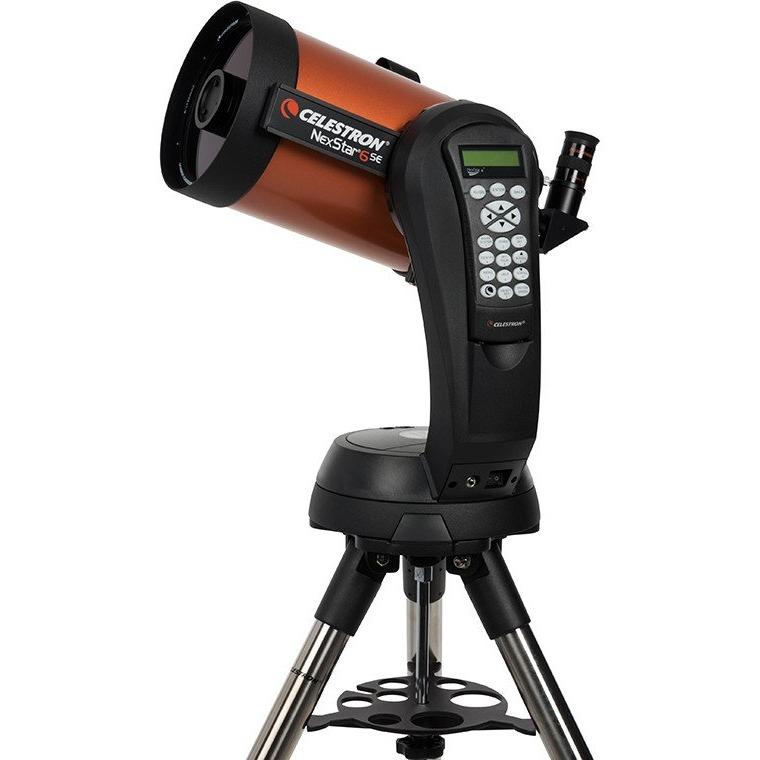

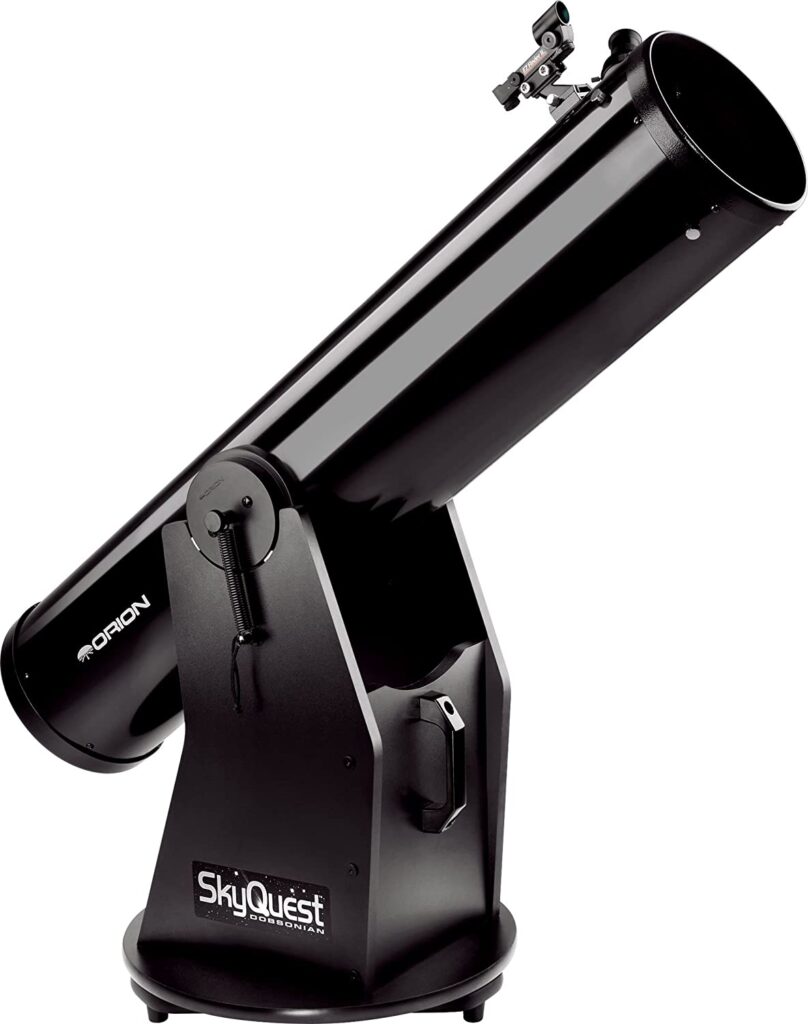
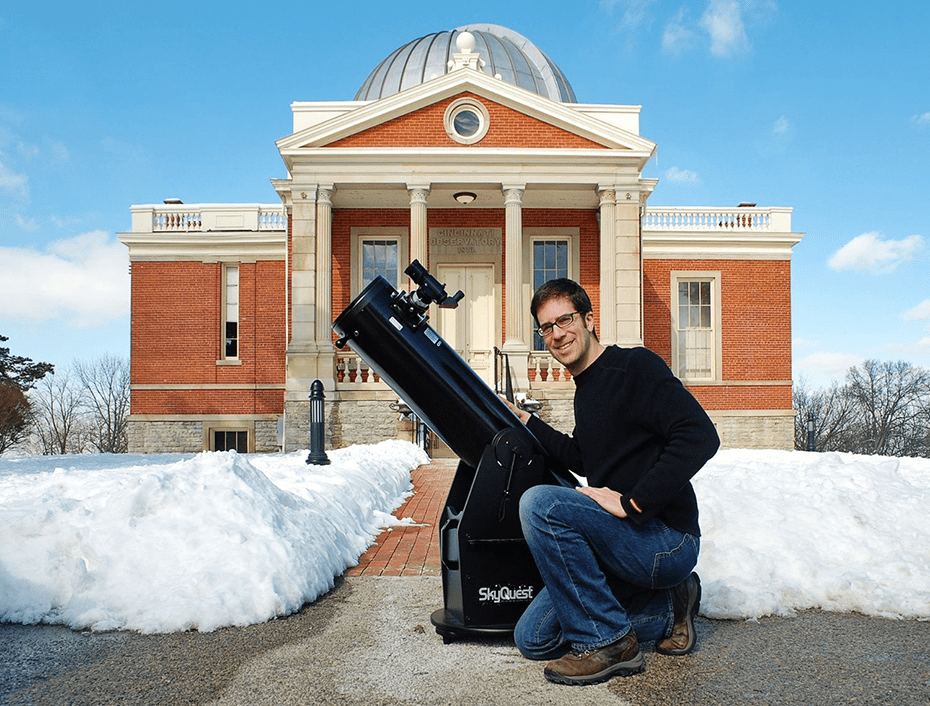

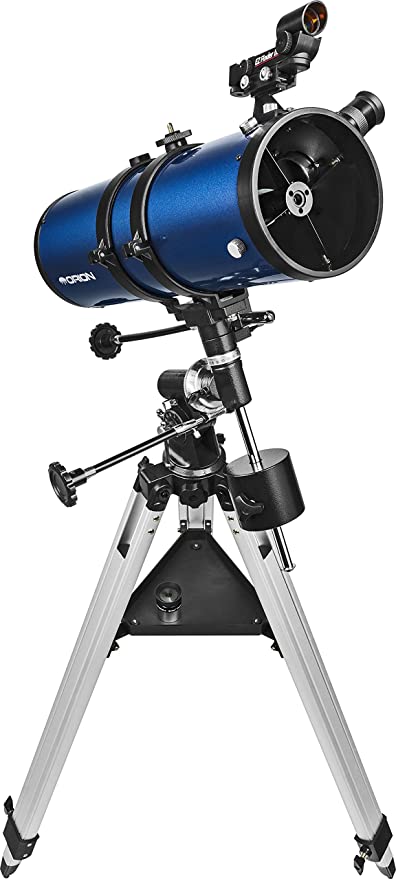
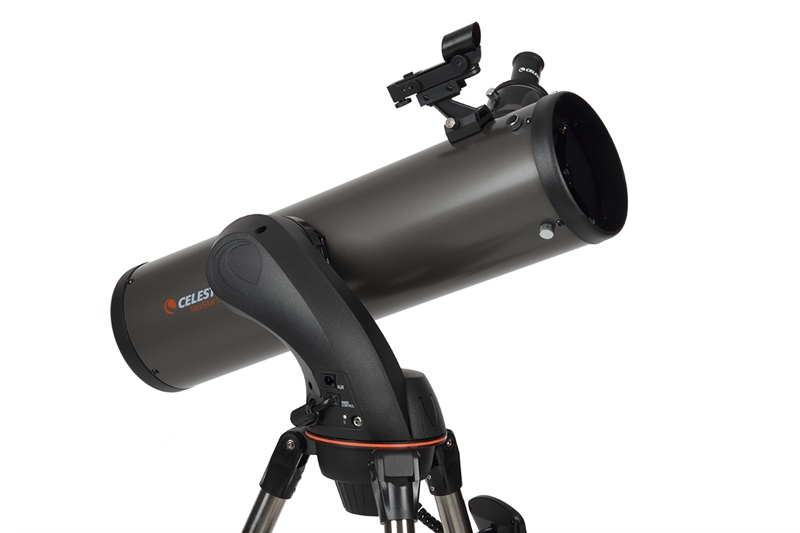

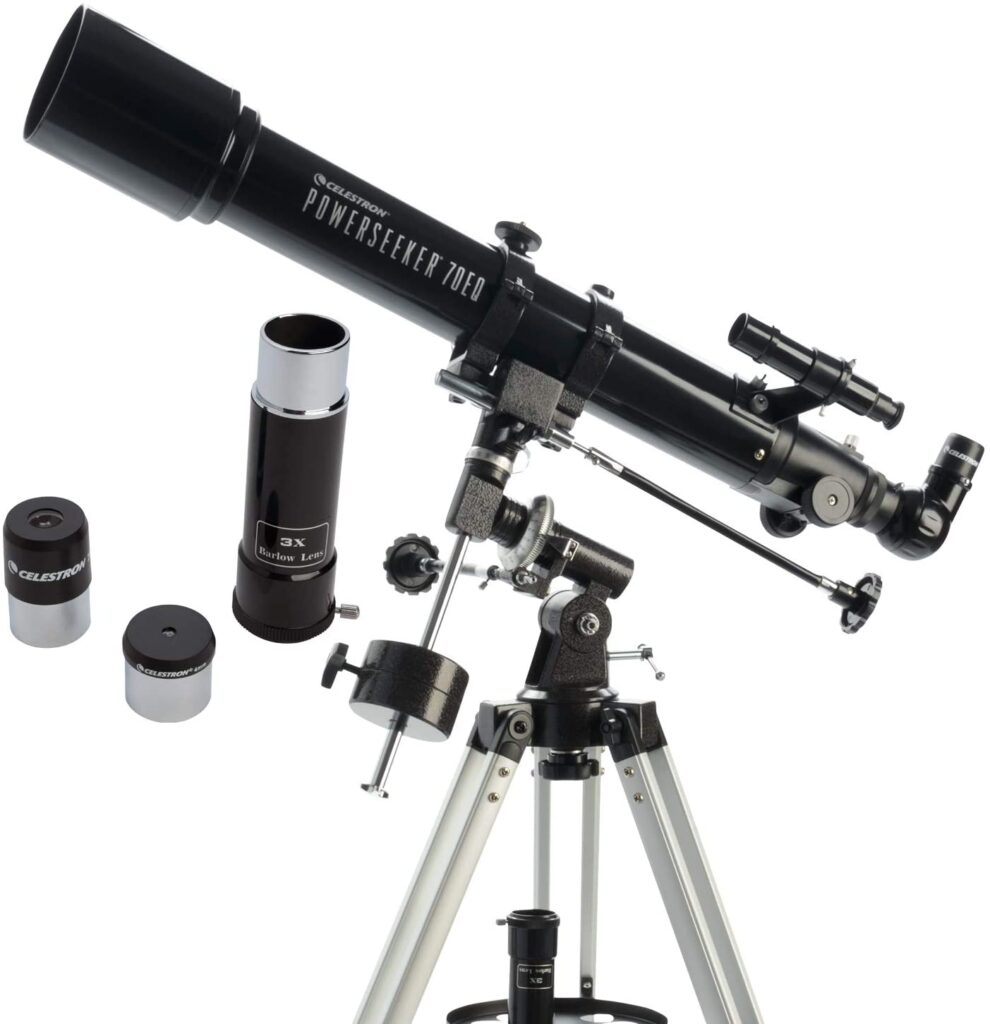
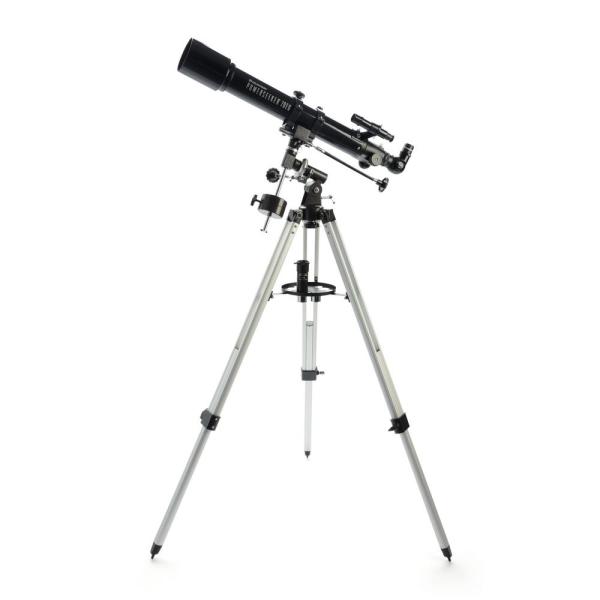
This Celestron NexStar 6SE telescope is amazing. It sure beats the massive contraption my father and I used to look through when I was a youngster. I can’t believe there are services that will find celestial bodies for you. I’ve been wanting to learn more about astronomy, and this telescope would be an excellent place to start. It’s quite useful and encouraging to know that Celestron has a website with videos and downloads.
Yes, I adore telescopes in general, since anything that allows me to go closer to the stars is something I love.
I think the Celestron NEXSTAR 6SE is fantastic; it provides excellent quality and range while operating on AA batteries, which means it won’t consume a lot of power.
Thank you for informing me about this, since I am really contemplating purchasing one.
What a fantastic review of the telescope for beginners!
My wife and I have been thinking about purchasing a telescope and getting into astronomy for quite some time.
This appears to be a fantastic telescope that is inside our price range.
Thank you very much for the tip; we are excited to put it to use!